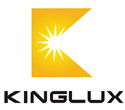| TEL:
+86 510 82123195
|
| Mobile: |
+86 18168862789
|
| FAX:
+86 510 84602998
|
| Email: |
info@kingluxlens.com
|
| MSN:
kingluxlens@hotmail.com
|
| Skype:
kingluxlens
|
| Q Q:
2852820700,2852820701,2852820699
|
|
|
| |
Company News
|
Current Location: Home >
News >
Company News
|
|
Analysis of the Differences between International Standards CIE and IESNA for Street Lighting
|
 |
|
According to the content of the CIE and IESNA road lighting design standards, it can be concluded that the differences in the design standards for motor vehicle lane lighting fixtures between the two standards are mainly reflected in the following three points:
1. It is the selection of evaluation indicators. CIE mainly uses brightness indicators for evaluation, including threshold increment TI and environmental ratio SR indicators; IESNA, on the other hand, uses three indicators for evaluation, namely illuminance indicator, brightness indicator, and small target visibility indicator STV. The illuminance indicator and brightness indicator both include the light curtain brightness ratio indicator to evaluate glare.
2. It is a calculation method for evaluation indicators. The main difference is reflected in the calculation of brightness indicators. CIE stipulates that there is only one observer in each lane, and it is fixed 60 meters behind the starting position of the calculation area, to observe the brightness of all matrix points in a lamp cycle; However, IESNA stipulates that each row of matrix points in the calculation area has a observer, and each observer always observes the brightness of the matrix point 83 meters in front of the row direction of the matrix, which means that the observer in the IESNA standard not only makes lateral movement in the direction perpendicular to the lane, but also makes longitudinal movement in the direction parallel to the lane.
3. Definition and specified values of evaluation indicators. For average brightness, total brightness uniformity, and longitudinal brightness uniformity, CIE and IESNA are defined as reciprocal relationships, and in terms of numerical values, the CIE standard specified by the same indicator is significantly higher than the IESNA standard. The average brightness of IESNA is 60% of CIE, and the brightness uniformity is 82% of CIE requirements.
|
|
|


